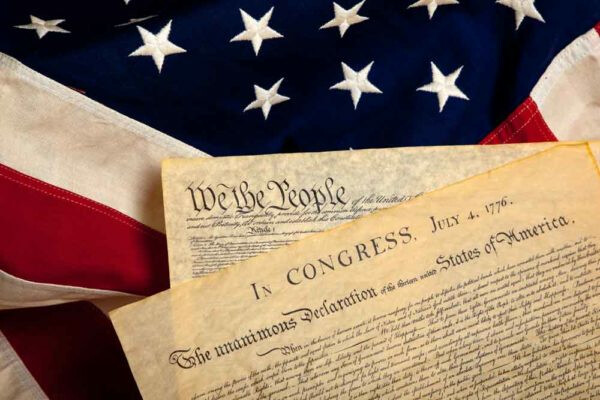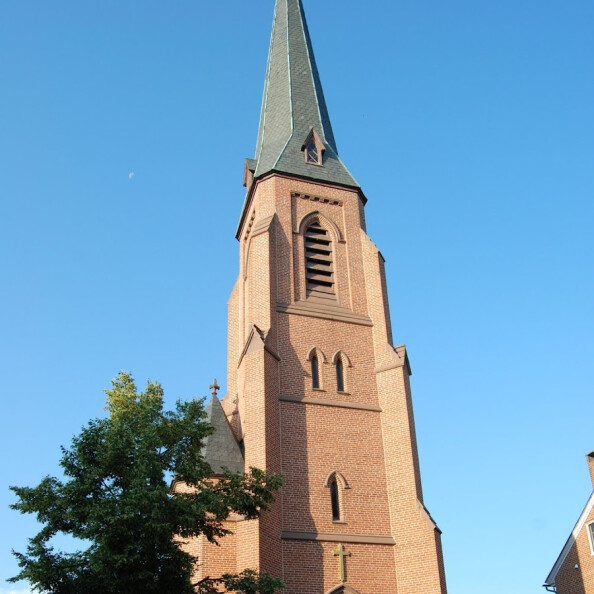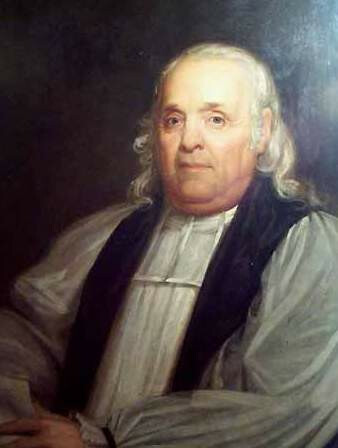1742
All Saints at the Crossroads of History
Crossroads is an apt term to use in describing All Saints Episcopal Parish, in Frederick, Maryland. In fact, our parish history follows the unfolding story of the nation in a place that is an important as both a geographical crossroads and a crossroads of history.
Founded in 1742, All Saints is the oldest Episcopal parish in western Maryland. Parishioners of All Saints have continually been the leaders in the community. Thomas Johnson, the first post-colonial governor of Maryland, and Francis Scott Key, prominent attorney and author of the National Anthem, worshiped at All Saints.
1765
All Saints parishioners helped set the stage for the American Revolution — some were among the “Twelve Immortal Judges” who repudiated the Stamp Act in November 1765. Born and baptized during the War for Independence, in penning the Star Spangled Banner (1814), former All Saints member Francis Scott Key established the flag as an expression of national identity, unity, and pride.

1793
All Saints was the site of the first confirmation of an American citizen, by Bishop Thomas John Claggett, the first Episcopal Bishop consecrated on American soil.
1814
A small colonial building was constructed about four blocks from our present church and served the parish for over sixty years. The replacement structure was built on Court Street in 1814 and is now used as parish hall and classrooms.
1765
A handsome neo-gothic structure was designed by the noted 19th church architect Richard Upjohn. The steeple is one of the clustered spires of Frederick, cited in John Greenleaf Whittier’s poem, Barbara Freitchie:
"The clustered spires of Frederick stand
Green-walled by the hills of Maryland.".

1861-1865: The Civil War

Less than a decade later, the Civil War broke out. For Fredericktonians, it was not only a war between the states, but a war within the state. The tension between the Northern rector and the Southerners in the congregation was characteristic of the division at the time. By December 1861, All Saints had already buried 11 soldiers.
After the battle of Antietam in September 1862, both church buildings were used as field hospitals, and many in the congregation volunteered their services to care for the wounded. The (now former) Rectory building at 108 W. Church Street was used as a military headquarters during the early part of the war. After many occupations, the city of Frederick survived, and the wounds, both physical and emotional, began to heal.
1988
Growing concerns about homelessness in our community resulted in the founding of Advocates for Homeless Families in 1988, a successful independent nonprofit that traces its roots to All Saints initiatives. The outcome of their admirable efforts has successfully impacted the lives of several hundred families who otherwise may not have had the support and resources to overcome their homelessness.
1980's - 90's
The decades of the 1980s and 1990s saw heightened hands-on outreach activity at home and beyond. Adults and youth alike served projects related to hunger, Christmas in April/Rebuilding Together, engagement with the Frederick Rescue Mission and staffing of the local cold weather shelter. In the mission field, All Saints organized several medical and post-hurricane rebuilding trips abroad to such places as Honduras and Panama sending numerous mission teams south to assist with the aftermath of Hurricane Katrina.


